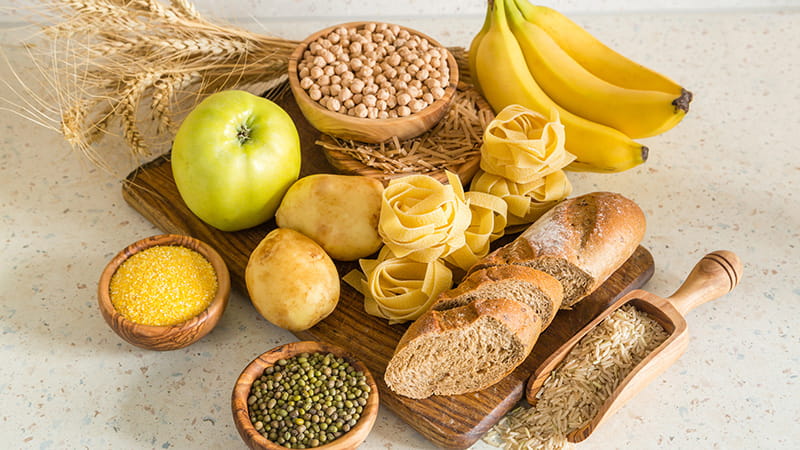Understanding Carbs

Find your balance.
You’ve heard it all. From carb-free to low-carb, to whole and empty carbs, it’s hard to know what it all means.
Get smart on carbs.
When you eat or drink foods that have carbohydrate—also known as carbs—your body breaks those carbs down into glucose (a type of sugar), which then raises the level of glucose in your blood. Your body uses that glucose for fuel to keep you going throughout the day. This is what you probably know of as your “blood glucose” or “blood sugar.” When it comes to managing diabetes, the carbs you eat play an important role. After your body breaks down those carbs into glucose, your pancreas releases insulin to help your cells absorb that glucose.
When someone’s blood glucose is too high, it is called hyperglycemia. There are a few causes for “highs,” including not having enough insulin in your body to process the glucose in the blood or the cells in your body not effectively reacting to the insulin that is released, leaving extra glucose in the blood. A low blood glucose is known as hypoglycemia. “Lows” can sometimes be caused by not consuming enough carbohydrates, or an imbalance in medications. In short, the carbs we consume impact our blood glucose—so balance is key!
Advertisement
Carbohydrates in food
There are three main types of carbohydrates in food—starches, sugar, and fiber. As you’ll see on the nutrition labels for the food you buy, the term “total carbohydrate” refers to all three of these types. The goal is to choose carbs that are nutrient-dense, which means they are rich in fiber, vitamins and minerals, and low in added sugars, sodium, and unhealthy fats. When choosing carbohydrate foods:
- Eat the most of these: whole, unprocessed, non-starchy vegetables. Non-starchy vegetables like lettuce, cucumbers, broccoli, tomatoes, and green beans have a lot of fiber and very little carbohydrate, which results in a smaller impact on your blood glucose. Remember, these should make up half your plate according to the Plate Method!
- Eat some of these: whole, minimally processed carbohydrate foods. These are your starchy carbohydrates, and include fruits like apples, blueberries, strawberries and cantaloupe; whole intact grains like brown rice, whole wheat bread, whole grain pasta and oatmeal; starchy vegetables like corn, green peas, sweet potatoes, pumpkin and plantains; and beans and lentils like black beans, kidney beans, chickpeas and green lentils. If you’re using the Plate Method, foods in this category should make up about a quarter of your plate.
- Try to eat less of these: refined, highly processed carbohydrate foods and those with added sugar. These include sugary drinks like soda, sweet tea and juice, refined grains like white bread, white rice and sugary cereal, and sweets and snack foods like cake, cookies, candy and chips.







